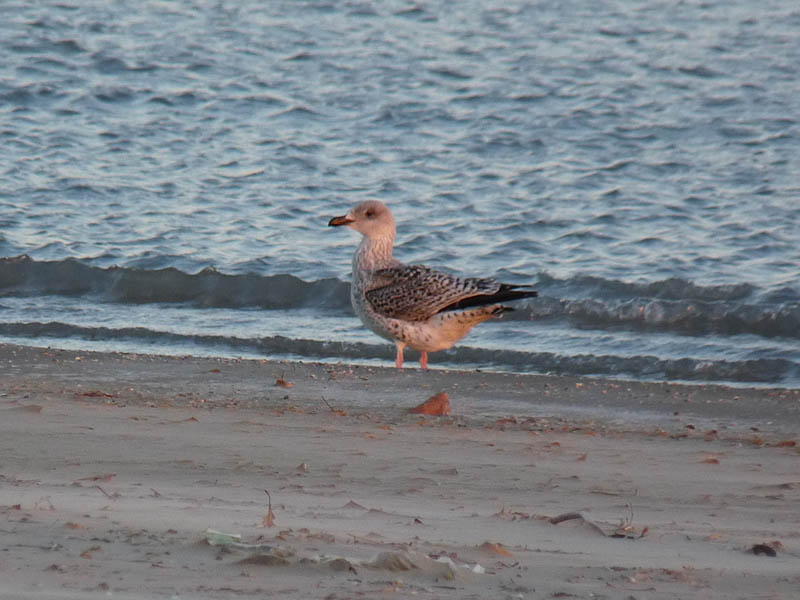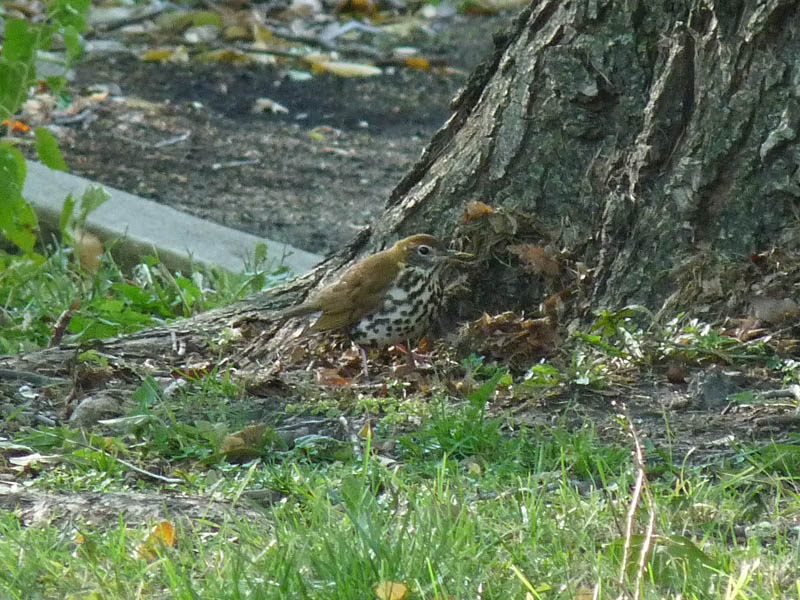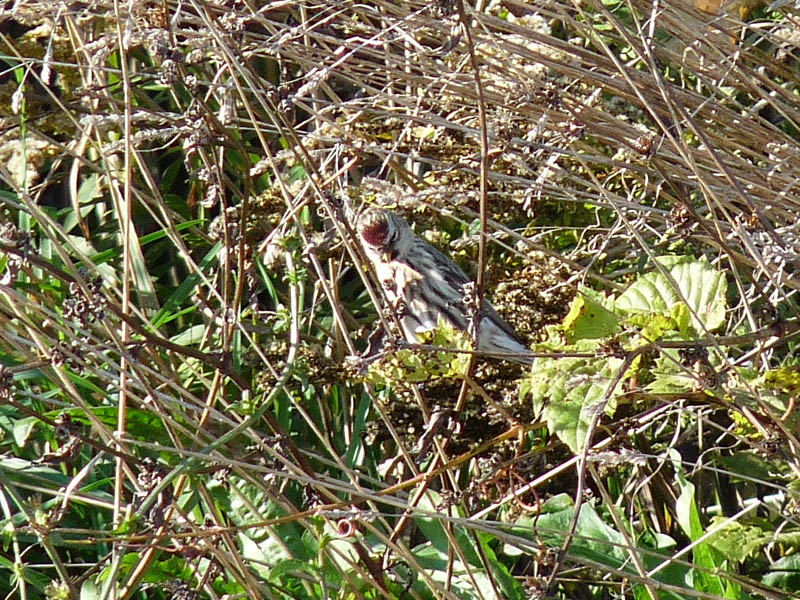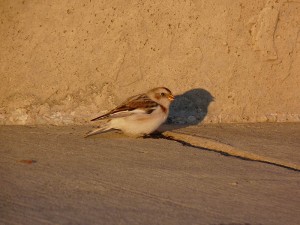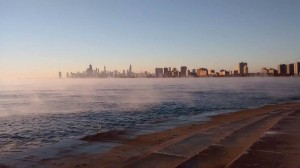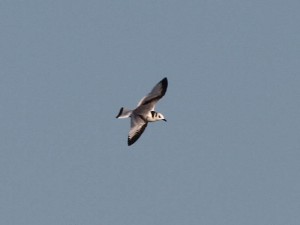Avian activity has slowed considerably at Montrose. I’ve been topping out at about 20 species on my two hour morning visits since December 1. Things won’t improve much until late February when spring migration begins, and if the harbor and Lake Michigan freeze it will only get worse. Common Mergansers and Common Goldeneye, the two main wintering ducks, haven’t arrived yet in numbers because of the mild weather we’ve been experiencing. They’ll start to show up when it gets seriously cold. The big flocks of Red-breasted Mergansers from November have pulled out. Lake Michigan now feels lifeless and empty without them. Common Redpolls are still around but for how long is anyone’s guess. Most of the sparrows from mid-November have left, with only Dark-eyed Juncos and American Tree Sparrows remaining. Despite the doldrums, we have had a few interesting species. An adult light morph Snow Goose has been keeping company with Canada Geese. Scan any group of Canada Geese if you’re looking for it. You could also find other uncommon geese like Cackling or Greater White-fronted by looking through the Canadas. An American Black Duck, an unusual bird for Montrose, has been with Mallards, usually in the harbor. On December 4 I saw an immature Great Black-backed Gull on the public beach. As always, check the Montrose Point eBird Hotspot for current sightings.
Suggestions for Winter Birding at Montrose
I have some suggestions for winter birding at Montrose. As long as the harbor remains open it’s worth checking for waterfowl, gulls, and grebes. Long-tailed Ducks, scoters, Red-necked and Western Grebes, and several unusual gulls have been seen in the harbor in early winter. Once the harbor freezes over this won’t be an option. The hawthorns near the restroom building on the south side of the harbor are full of berries as of early December. On December 4 I had American Robins, European Starlings, and a few House Finches gorging on these berries, and something rare like a Pine Grosbeak or Bohemian Waxwing is possible while the berry supply lasts. Finally, 2020 isn’t shaping up to be a flight year for Snowy Owls but a few could still show up. The best places to look for them are the beach, Dunes, and fishing pier.

